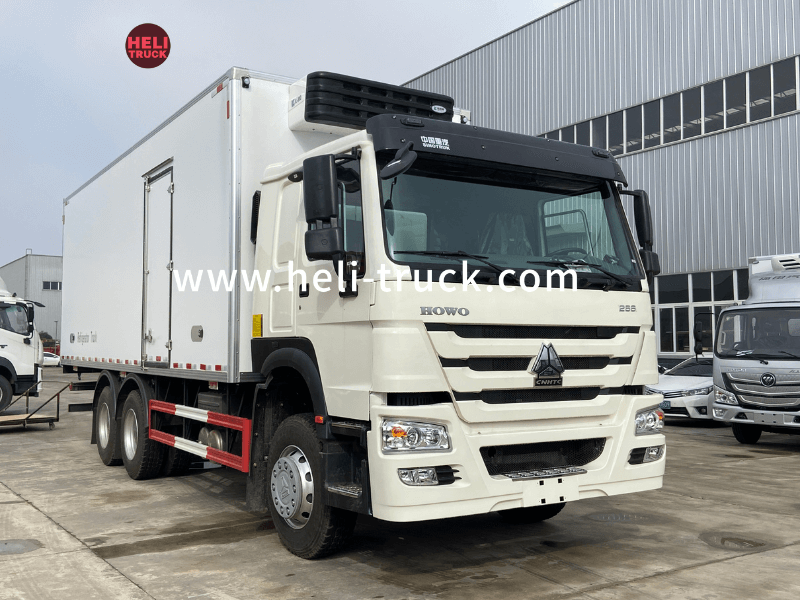Introduction
Vacuum trucks play a crucial role in various industries, from waste management to oil and gas operations. These specialized vehicles are designed to efficiently collect and transport a wide range of materials, including liquids, sludge, and hazardous waste. While vacuum trucks offer numerous benefits in terms of efficiency and versatility, their operation can have significant environmental impacts. In this article, we will delve into the environmental implications of vacuum trucks, including their potential contributions to air and water pollution, as well as strategies to mitigate these impacts.
Overview of Vacuum Trucks
Vacuum trucks, also known as vacuum tankers or vacuum loaders, are equipped with a powerful vacuum system that allows them to suction up materials from storage tanks, sewers, and other confined spaces. These vehicles typically consist of a tank for storing collected materials, a vacuum pump or blower for creating suction, and various hoses and fittings for transferring materials.
Vacuum trucks are widely used in industries such as construction, mining, agriculture, and municipal services. They are essential for tasks such as cleaning up spills, maintaining sewer systems, and transporting hazardous waste. Vacuum trucks come in various sizes and configurations to meet the specific needs of different applications.
Environmental Impacts of Vacuum Trucks
Despite their utility, vacuum trucks can have significant environmental impacts, particularly in terms of air and water pollution. The operation of vacuum trucks involves the handling and transportation of various materials, some of which may be hazardous or toxic. The following are some of the key environmental impacts associated with vacuum trucks:

Air Pollution: The vacuum system of a vacuum truck generates suction by creating a partial vacuum within the tank. This process can release airborne particles and contaminants into the atmosphere, especially if the collected materials are dusty or volatile. Additionally, the combustion engines used to power vacuum trucks emit exhaust gases, including nitrogen oxides (NOx), carbon monoxide (CO), and particulate matter, which can contribute to air pollution.
Water Pollution: Vacuum trucks are often used to transport liquids, including wastewater, sewage, and chemical substances. If not properly managed, these liquids can leak or spill during transportation, leading to water pollution. Contaminated water from vacuum truck operations can seep into the soil or enter nearby water bodies, posing risks to aquatic ecosystems and human health.
Soil Contamination: In addition to water pollution, vacuum truck activities can also result in soil contamination. Spills or leaks of hazardous materials during loading, unloading, or transportation can contaminate the soil, affecting soil quality and potentially harming plant and animal life.
Noise Pollution: The operation of vacuum trucks, particularly the vacuum pumps and engines, can generate significant noise levels. Prolonged exposure to high levels of noise can have adverse effects on wildlife, including disturbance of breeding and feeding behaviors.
Greenhouse Gas Emissions: Vacuum trucks typically run on diesel fuel, which is a major source of greenhouse gas emissions, including carbon dioxide (CO2) and methane (CH4). The combustion of fossil fuels in vacuum truck engines contributes to climate change by increasing the concentration of greenhouse gases in the atmosphere.
work truck
To address the environmental impacts of vacuum trucks, it is essential to implement mitigation strategies that minimize pollution and promote sustainable practices. The following are some key strategies for reducing the environmental footprint of vacuum truck operations:
1. Use of Alternative Fuels: One effective way to reduce greenhouse gas emissions from vacuum trucks is to transition to alternative fuels, such as biodiesel or compressed natural gas (CNG). These cleaner-burning fuels produce fewer emissions and can help lower the carbon footprint of vacuum truck operations.
2. Proper Waste Management: Proper handling and disposal of collected materials are essential to prevent pollution from vacuum truck activities. Operators should follow best practices for waste management, including segregating different types of waste, securing loads to prevent spills, and ensuring compliance with environmental regulations.
3. Spill Prevention and Response: To minimize the risk of spills and leaks during vacuum truck operations, operators should implement spill prevention measures, such as regular equipment maintenance, staff training, and the use of spill containment systems. In the event of a spill, prompt response and containment are crucial to prevent environmental damage.
4. Regular Maintenance and Inspections: Routine maintenance and inspections of vacuum trucks are essential to ensure their safe and efficient operation. Regular servicing of equipment, including vacuum pumps, hoses, and tanks, can help prevent leaks, malfunctions, and other issues that could lead to environmental contamination.
5. Environmental Monitoring: Monitoring the environmental impacts of vacuum truck operations is important for assessing compliance with regulatory requirements and identifying areas for improvement. Implementing environmental monitoring programs can help track air and water quality, soil contamination, and other indicators of environmental health.
6. Training and Education: Providing training and education to vacuum truck operators and staff on environmental best practices and regulatory requirements can help promote a culture of environmental stewardship. Training programs should cover topics such as spill response procedures, waste handling guidelines, and pollution prevention measures.
Conclusion
Vacuum trucks play a vital role in various industries, but their operation can have significant environmental impacts, including air and water pollution, soil contamination, noise pollution, and greenhouse gas emissions. By implementing mitigation strategies and promoting sustainable practices, operators can reduce the environmental footprint of vacuum truck operations and protect the environment for future generations. Through proper waste management, spill prevention, regular maintenance, and environmental monitoring, vacuum trucks can continue to fulfill their essential functions while minimizing their impact on the environment.
